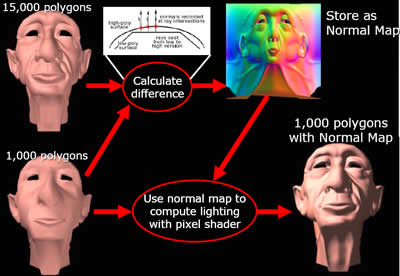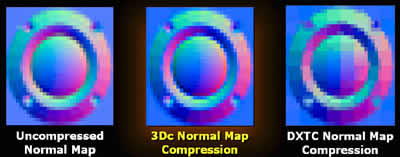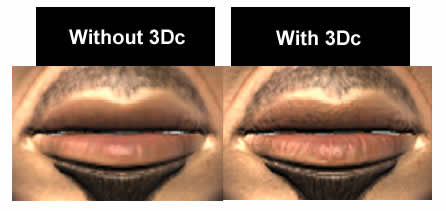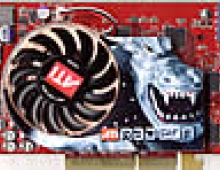Connect 3D X850XT PE
2. Features
Connect 3D X850XT PE - 02 - Features
| Main Features | |
| GPU | Radeon X850 XT PE - R480 |
| Memory Brand/Model | Samsung K4J5532Q-GC16 (1.6ns) |
| Memory Type | 256 MB 256-bit GDDR3 |
| Engine Clock Speed | 540MHz |
| Memory Clock Speed | 590MHz |
| Memory Bandwidth | 35.8 GB/sec |
| Pixel Pipelines | 16 |
| Vertex Pipelines | 6 |
| Fill rate | 8.6 Giga pixels /sec |
| DX Support | 9.0 |
| OpenGL Support | 1.5 |
| Output | VGA / DVI-I / D-Sub |
| Bus | AGP 4X/8X |
| Processing technology | 0.13 micron |
As we mentioned earlier, Connect3D's X850 XT Platinum Edition is based on ATi's latest chipset, the R480. The R480 is not very different from the previous high end R430. It is also built using the 0.13 micron low-k fabrication process and still features 16 Pixel Pipelines and 6 parallel Vertex engines.
However, the GPU clock ticks at 540MHz (20MHz more than the X800 XT PE) while the memory clock's speed is set at 590MHz, thus reaching 1.18GHz effective frequency against 1.08MHz for the X800 XT PE.
Basically, that's all the difference you will get compared to an AGP X800 XT PE. As a result of the slightly higher clock speeds, the X850 XT PE offers increased fill rate and memory bandwidth which will in turn produce "slightly" increased performance.
Here's a table showing the differences between the X800 XT PE and the new X850 XT and XT PE:
X800 XT PE |
X850 XT | X850 XT PE | |
| Core(MHz) | 520 | 520 | 540 |
| Memory(MHz) | 560(1120) | 540(1080) | 590(1180) |
 |
| X800=X850 Architecture |
3Dc
To understand what 3Dc does, we need to quickly run through a brief discussion on normal maps.
You can think of a normal as an arrow pointing outwards from a surface at a 90 degree angle in order to quickly access its angle difference from different points of lighting.
First, a model with an extremely high polygon count is created (i.e 15,000 polygons) and then one with less (1,000 polygons) and that is the one that we'll eventually keep. Running a simple program calculates the differences between the two models and stores it as a normal map texture. Before rendering the final model in the game, the normal map texture is applied on the low polygon model and pixel shader instructions are used to compute real time lighting.
 |
| A quick example of Normal Mapping (not 3Dc!) |
Normal mapping is greatly used in some of the most successful game titles of our days, like Far Cry, Half Life 2 and Doom 3. However, the problem with Normal mapping is the great limitation on the texture size due to the lack of compression.
To get a peek at what would happen if none of the textures were compressed in a recent game, try Doom 3 and set the details to Ultra High. As suggested by Id Software, Doom3's publisher, the Ultra High detail level requires a graphics card with 512Mb RAM. In case you're not really into the graphics card market, there is no card with 512Mb RAM, yet.
Such is the case with normal mapping. The current texture compression algorithms, DXTC and S3TC, are inapplicable on normal mapping textures as they produce block artifacts, so programmers usually avoid using them.

3Dc is the solution to this problem with an algorithm that splits up the texture into blocks. Then compressing each block, it is able to achieve up to 4:1 compression.
 |
When using 3Dc you can get much better quality textures with the same performance from your card. |
The bad thing about 3Dc is that we'll have to wait until the game developers incorporate it into their engines or release a patch that takes advantage of it. Ubisoft was supposed to be the first to include 3Dc support into their much awaited Far Cry patch 1.3. However, as we found out, there is no actual difference in the game despite the addition of the console command "EnableCompressedMaps".
SMARTSHADER™ HD
- Full hardware acceleration of Microsoft® DirectX®
9.0 programmable vertex and pixel shaders in
hardware
DirectX 9.0 Vertex Shaders
- Vertex programs up to 65,280 instructions
with flow control - Single cycle trigonometric operations
(SIN & COS)
DirectX 9.0 Extended Pixel Shaders - Up to 1,536 instructions and 16 textures per
rendering pass - 32 temporary and constant registers
- Facing register for two-sided lighting
- 128-bit, 64-bit & 32-bit per pixel floating point
color formats
- Multiple Render Target (MRT) support
• Complete feature set supported in OpenGL®
via extensions
SMOOTHVISION™ HD
• 2x/4x/6x Anti-Aliasing modes
Sparse multi-sample algorithm with
gamma correction, programmable
sample patterns, and centroid sampling
Lossless Color Compression (up to 6:1)
at all resolutions, including widescreen
HDTV resolutions
Temporal Anti-Aliasing
2x/4x/8x/16x Anisotropic Filtering modes
- Up to 128-tap texture filtering per
AA sample
- Adaptive anisotropic filtering algorithm
with bilinear (performance) and trilinear
(quality) options
HYPER Z™ HD
• 3-level Hierarchical Z-Buffer with Early Z Test
• Lossless Z-Buffer Compression (up to 48:1)
• Fast Z-Buffer Clear
• Z cache optimized for real-time shadow rendering
• Optimized for performance at high display
resolutions, including widescreen HDTV resolutions
VIDEOSHADER™ HD
• Seamless integration of pixel shaders and video in
real time
• FULLSTREAM™ video de-blocking technology for
Real, DivX, WMV9 and WMV10 formats
• VIDEOSOAP™ noise removal filtering for captured
video
• MPEG1/2/4 decode and encode acceleration
DXVA support
Hardware Motion Compensation, iDCT, DCT and
color space conversion
• All-format DTV/HDTV decoding
• Adaptive Per-Pixel De-Interlacing and Frame Rate
Conversion (temporal filtering)

















